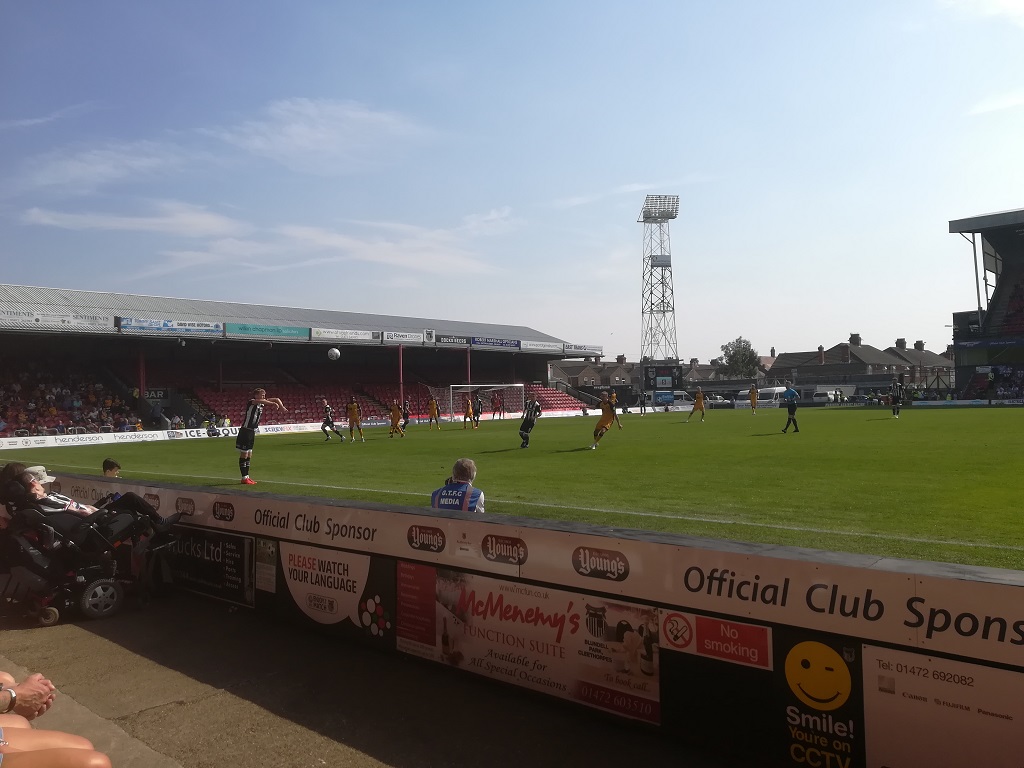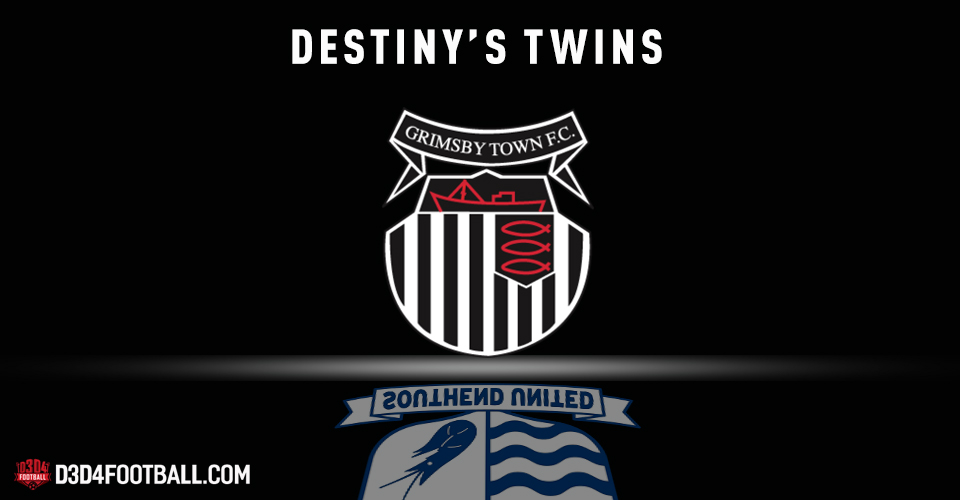DESTINY’S TWINS
So, farewell then Southend United and Grimsby Town as they exit the Football League after over two hundred years’ service between them. For the traditionalist, it’s often sad to see clubs of this stature from towns of this size suffer relegation to the National League. But that’s the penalty for poor management on their part and the price of automatic promotion throughout the pyramid.
Strangely they have more common than their twin peaks of despair this year. Both lie on England’s east coast and inhabit quixotic and architecturally unusual stadiums beloved of groundhoppers but despised by their owners, respectively keen for many years to move away from Roots Hall (Southend) and Blundell Park (Grimsby). The inability to move on commercially may underpin the failure on the pitch.

Blundell Park, home of Grimsby Town
Anniversary years are no defence against failure either. This was the 100th anniversary of Southend joining the Football League Division Three in 1920-21, from the Southern League. In that newly created division, strange to say, they found Grimsby Town who were saved from expulsion from the Football League by being found a temporary one season berth in this otherwise totally southern competition. A year later Grimsby would join the newly formed Division Three (North) and their paths wouldn’t cross again until 1959. But, like a couple meeting in freshers’ week, they must have hit it off straight away in 1920, playing each other home and away in two of their first four matches and sharing the points equally. They finished 1920-21 just three points apart, as opposed to the two points gap this season, 2020-21.
Grimsby’s life story in the League is longer, noisier and more volatile. Joining in 1892 from a strong football area the Mariners have enjoyed 12 top-flight seasons (the last in 1947-48) but now leave the League for the third time (the first being a one-season exit in 1911). In all that time they won six divisional titles across four different divisions. By contrast, the Shrimpers (an equally sea-faring nickname) were the quiet ones, becalmed in Division Three South and then Division Three until relegation to Division Four in 1966.

‘Never Give Up’ – Southend United’s Roots Hall
Fifty years ago, as we’re talking anniversaries, we find them level on points at 18th and 19th in Division Four. The next season (1971-72) saw a huge improvement with both promoted, just three points apart. A decade later they didn’t quite keep step with Grimsby winning Division Three in 1979-80 the year before Southend won Division Four in 1980-81. But another decade further on they were back in lockstep, holding tighter than ever. In 1989-90 they were promoted together from Division Four and again promoted together from Division Three the very next season.
It was Southend’s very first peek at life outside the “lower divisions” as they were then called. Familiar Grimsby were there to hold their hand, as it were. Over the next five second-tier seasons they were, on average, just five points apart – once separated only by goal difference. And when the Shrimpers sank in 1996-97 the Mariners, seemingly inevitably, also took the plunge with them.
By now it must have been time for some time apart. It’s not you, it’s me, mused Grimsby as they returned back up to the second tier. By 2004-05 the two clubs were ships briefly passing in the night as they shared one third-tier season. Southend had the better of things with one more second-tier season in 2006-07 by which time poor old Grimsby were unable to rise from the fourth tier.
There was an echo of the old synchronicity in 2009-10 when Southend dropped to the fourth tier as their old partners in divisional change fell out of the League altogether for the second time. Whilst Grimsby made it back into the fourth tier in 2016-17 it was always a struggle. If anybody at Blundell Park also followed these omens, coincidences, fates, call them what you will, it’s likely they would not have greeted the resumption of fixtures with a freshly relegated Southend with much hope in their hearts. And, as the final table for League Two in 2020-21 sadly shows, this pair were yet again not walking alone; hand in hand a century later, this time together joining the National League.
words Roger Titford, author and football historian



